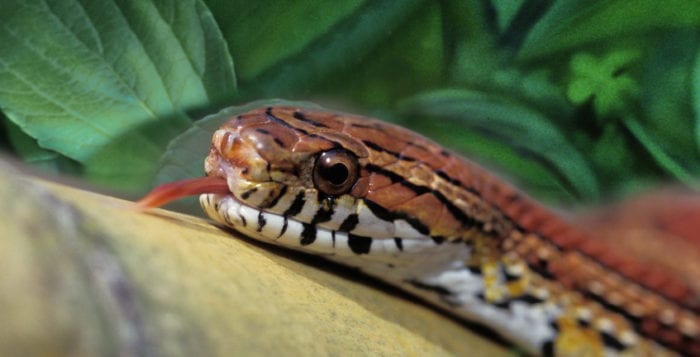By Elof Axel Carlson

The re-discovery of Mendelism in 1900 greatly enhanced breeding for new varieties of animals and plants. Similarly, the discovery of sex chromosomes and the chromosome theory of heredity enhanced Mendelism five years later. The discovery in the 1970s of genes controlling embryonic organs and body plans enhanced both embryology and genetics.
Also in the late 20th century a molecular approach was worked out that allows detection of genes and their functions using DNA sequencing and tools for isolating and inserting genes from one species into another. A good example of this is the analysis of limb development in vertebrates.
We are vertebrates because we have a spinal column and so do fish, frogs and tetrapods (four-limbed organisms like mice, humans, deer and lizards).
But some vertebrates lack limbs. Snakes are the best example of this. Boas and pythons do have internal vestigial hind limbs but totally lack any rudiments of limbs for their forelimbs. Most snakes, like vipers, have no sign of limb development when X-rayed or when their skeletons are studied by anatomists.
How did the snakes lose their limbs? The earliest ancestors of snakes did have hind limbs. Those ancestral types are only known from the fossil record. In the 1970s Hox genes, which determine development from the head to the tail, were found in vertebrates. The Hox gene for limb development is Hox C-6. It is regulated by another gene called sonic hedgehog or Shh. In vipers the Shh gene regulating Hox C-6 is mutated for both fore and hind limb production. In pythons it is nonfunctional for forelimbs but mutated with an aborted development preventing full growth of the hind limb buds.
Just this year, molecular biologists used the new techniques of gene removal and transfer (using a tool called CRSPR) and removed the Shh gene from a mouse fertilized egg. It resulted in a limbless baby mouse. When they put a python’s Shh gene in a mouse embryo whose Shh gene was removed, the resulting baby mouse had vestigial nubbins. When a mouse fertilized egg had its own Shh gene removed and replaced by that of a fish or human Shh gene, the baby mouse had perfectly normal limb development.
This work by Axel Visel and colleagues at Lawrence Biology Laboratories in Berkeley was published in the journal Cell. What makes science so attractive to scholars is its convincing logic, tested by experiments, to explore, confirm or rule out different interpretations of a puzzle. The puzzle of nature in this case is why snakes lost their limbs.
Those who see it in human terms (because we often use the ancient Greek dictum “Man is the measure of all things”) may invoke that the snake was punished for its role in corrupting humans. The scientist, however, likes to see things in more detail. There is comparative anatomy, the fossil record, experimental embryology, gene identification for function, sequencing for recognizing the gene, molecular tools for isolating the gene and experimental means of altering fertilized eggs to follow their fate.
Elof Axel Carlson is a distinguished teaching professor emeritus in the Dept.of Biochemistry and Cell Biology at Stony Brook University.





